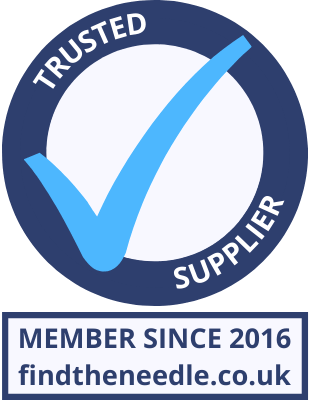 Add My Company
Add My Company

Donal O’Driscoll from The Goodfish Company shared their case study with us. Problem: We need to defrost fish from frozen blocks at -15°C as quickly as possible without the product temperature exceeding +4°C at any point in the defrost cycle. We need to defrost up to 1.5 tonnes per defrost cycle. 3 trolleys, 12 trays per trolley 6 x 6.81 kg blocks per tray. “Our defroster has run reliably since March 2018. Lamonde provided the Weintek HMI, Haiwell PLC, along with associated expansion digital & analogue modules and 24vdc power supplies.” Both the Haiwell PLC & Weintek HMI come with free fully functional programming software, we also used Weintek’s EasyAccess 2.0 service for remote monitoring, along with a VNC client. We use the email function in the HMI for sending alarm messages and screenshots when a batch is started and stopped to ensure the correct recipe is selected. The system allows us to do the following… Rotation: Rotate a set of 3 trolleys with frozen fish in a chamber, the traditional method is to blow air in one direction then reverse the airflow after a period and blow the opposite direction. The trolley rotation allows for a more even defrost throughout the trolleys. Rotation is achieved via a single motor and chain drive system. The plc initiates start-up and stop of the motor inverter with a volt free digital output. Heating and blowing: Each trolley has a stream of heated air blowing across it which defrosts the fish. A set of relays are used to start and stop the 3 fans and 3 sets of heating elements in a duct running above the defrosting chamber, the heated air leaves one side of the chamber and is recycled back and enters the opposite side with a set of vanes from ceiling to floor to help distribute air from top to bottom of each trolley. Relays are controlled by digital outputs on the plc and an additional digital i/o module. Temperature Control: Temperature probes are used to read air temperatures and product temperatures and elements are turned on or off to maintain the room at the appropriate temperature. A refrigeration system will bring the temperature down if necessary and also kicks in at the end of the defrost cycle which can happen overnight. These probes are connected to the analogue module on the plc. We built the defroster and ran it manually for a number of days to figure out the process, i.e. we used manual switches to start and stop heaters fans and rotation. Once we had figured out our times and temperatures we programmed the PLC & HMI to take over the defrost cycle. The first version worked pretty well and we spent a few weeks measuring temperatures on every block of fish and at each stage of the defrost cycle to ensure we kept the product under 4°C. We developed recipes for different block sizes and products. We have used the same programs now for about 2 years. Minor changes have been made mainly around resilience and alerting i.e. dealing with the 5-10 second lag between a power cut and our generators taking over the electrical supply. Working with Lamonde: My background is in IT support, database management and some limited engineering cover for our maintenance department. This was the first automation project that I have designed and built with our inhouse maintenance engineer. Duncan from Lamonde was so helpful from the start and helped me select the correct hardware and software. He provided links to resources within and outside of Lamonde. He worked through any of my problems and made plenty of suggestions that were adopted into the final project. I am amazed at the amount of free support time given which Duncan says is “all part of the service that Lamonde provide”. We recently purchased a meter to monitor our electrical usage from another company. We needed a HMI to pull data from the meter and present it to our engineers and managers. Again Duncan provided a cost effective solution. He also guided me through the Modbus connection, data formatting, data logging, charting and presentation. While we only purchased a few hundred euros worth of equipment from Lamonde for this project Duncan again provided answers to all of my queries. Duncan seems to genuinely enjoy helping his customers. I always thought that these types of projects would cost many thousands of euros, my first automation project cost less than a thousand euros for hardware and software, my second project cost less than €400. If you are dipping your toes in an automation project or are teaching/learning automation give Lamonde a look, you will not regret it. Donal O’Driscoll, IT Manager, Good Fish Processing Ltd.
For more information on Case Study: Defrosting and Temperature Control in Food Production talk to Lamonde Automation Ltd

